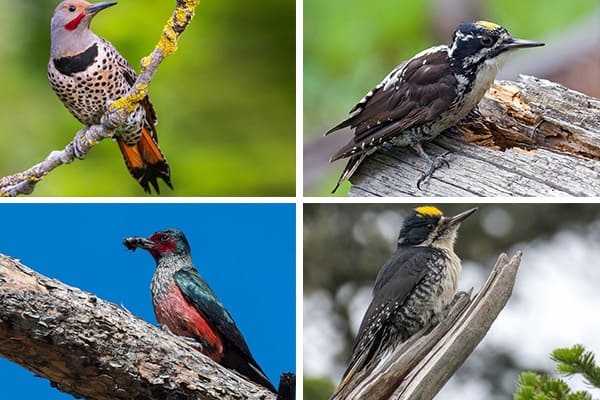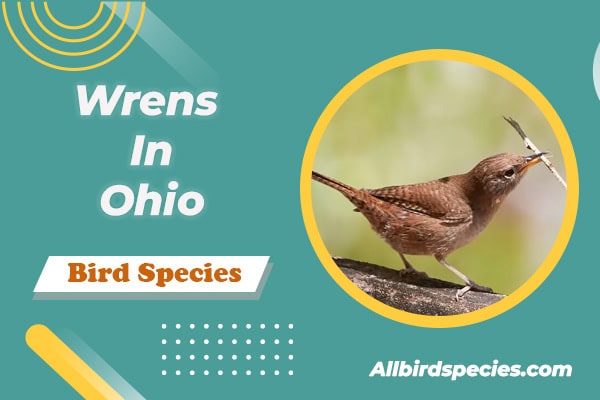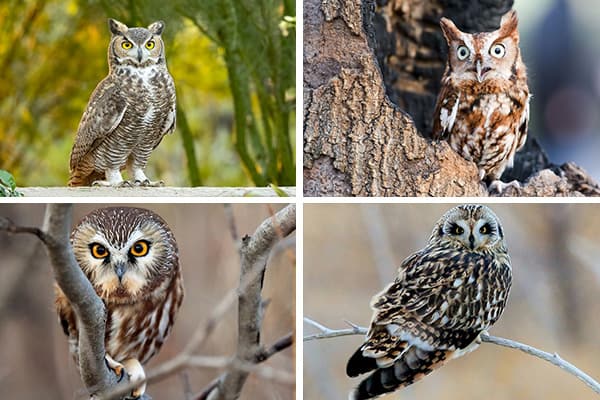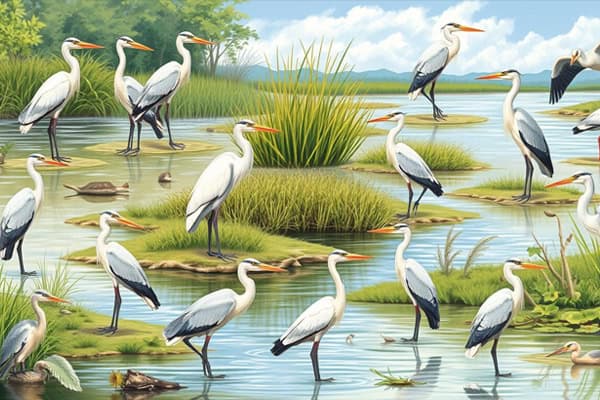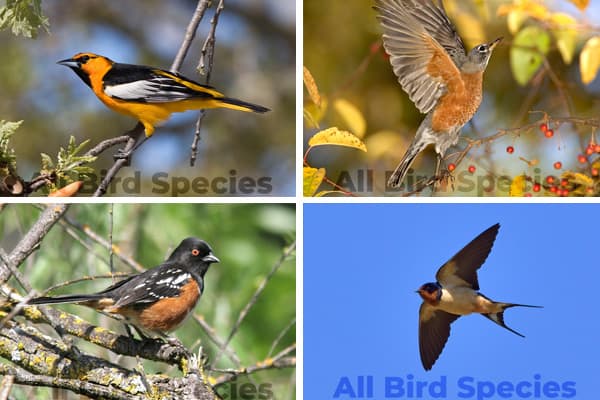Top 10 Types of Woodpeckers in Michigan (With Photos)
Did you know Michigan is home to over 10 types of woodpeckers? It’s one of the top states in the U.S. for bird watching. From the cute Downy Woodpecker to the big Pileated Woodpecker, we have many woodpecker species here. These birds love our forests and swamps.
We will look at the top 10 woodpeckers in Michigan, with beautiful photos. Learning about these birds helps us appreciate them more. They play a big role in our state’s ecosystems.
Common Woodpeckers Found In Michigan
- Red-headed Woodpecker
- Red-bellied Woodpecker
- Black-backed Woodpecker
- Downy Woodpecker
- Hairy Woodpecker
- Pileated Woodpecker
1. Red-headed Woodpecker
- Wingspan: 35 – 43 cm
- Length: 19 – 23 cm
- Mass: 56 – 91 g
- Lifespan: >9 years
The Red-headed Woodpecker is known for its bright colors and unique behaviors. It’s a medium-sized bird that catches the eye with its striking look and interesting ways. Birdwatchers and nature lovers find it quite captivating.

Physical Characteristics
This bird is easy to spot because of its bright red head, black back, and white belly. This mix of colors makes it stand out in the woods. It’s about 9 to 10 inches long, which is typical for woodpeckers. It also has a strong, pointed bill perfect for finding food.
Typical Habitat and Behavior
The Red-headed Woodpecker likes living in places with lots of dead trees, like deciduous forests and wetlands. It’s also found in parks. It’s known for its loud calls in the forest. This bird often goes back to the same nest every year, showing its unique habits.
| Characteristic | Description |
|---|---|
| Coloration | Bright red head, black back, white belly |
| Size | 9 to 10 inches |
| Habitat Preference | Deciduous woodlands, swamps, parks |
| Nesting Behavior | Uses the same cavity annually |
| Call | Sharp, shrill sounds |
2. Red-bellied Woodpecker
- Wingspan: 33 – 42 cm
- Length: 23 – 27 cm
- Mass: 56 – 91 g
- Lifespan: >12 years
The Red-bellied Woodpecker is a medium-sized bird that stands out with its unique colors and active nature. Learning how to identify these birds makes bird-watching more exciting. We can spot them by their black-and-white backs and the buffy-white bellies with a subtle red on males.

Identifying Features
This woodpecker is easy to recognize because of its distinct patterns. Males have a bright red nape, while females have a less vibrant version. They are about 9 to 10 inches long and have long bills perfect for finding food.
Nesting Habits and Diet
Red-bellied Woodpeckers nest in tree cavities, often in dead or decaying trees. This shows their ability to adapt to different environments, from deep forests to suburban areas. They eat insects, fruits, nuts, and seeds, and sometimes visit bird feeders.
Woodpeckers in other Regions:
| Woodpeckers in Maryland |
| Woodpeckers in Iowa |
| Woodpeckers in California |
| Woodpeckers in Wisconsin |
| Woodpeckers in Missouri |
3. Black-backed Woodpecker
- Wingspan: 40 – 42 cm
- Length: 22 – 24 cm
- Mass: 61 – 88 g
- Lifespan: >8 years
The Black-backed Woodpecker is a special bird in Michigan’s bird world. It lives in certain areas that are perfect for it. Learning about where it lives helps us understand this unique bird better.

Habitat Preferences
This woodpecker loves living in forests full of conifers, especially after fires. These fires make the forests full of wood-boring beetle larvae. These larvae are a key food source for the woodpeckers. They make their homes in dead or dying trees, digging out cavities for shelter and to raise their young.
In Michigan, you’ll usually find these woodpeckers in the north. This is where they find the best food and places to nest. Their love for burned areas makes them stand out. They show us how healthy the forest is.
Related Video:
| Habitat Type | Feeding Preference | Nesting Sites |
|---|---|---|
| Coniferous forests | Wood-boring beetle larvae | Dead trees |
| Burnt areas | Variety of insects | Excavated cavities |
| Mixed forests | Ants and other insects | Decayed wood |
4. Downy Woodpecker
- Wingspan: 25 – 30 cm
- Length: 14 – 17 cm
- Mass: 21 – 28 g
- Lifespan: >12 years
The Downy Woodpecker is a small bird that catches our eye with its unique look and actions. It’s the smallest woodpecker in North America, known for its black and white feathers and white belly. We see these birds in Michigan, often in open woods where they look for food.

Size and Appearance
The Downy Woodpecker is about 6 to 7 inches long, making it easy to see as it moves through trees. It has a small, strong bill perfect for finding insects in tree bark. Its back has black and white patterns that help it blend in with the trees. Both males and females look alike, but males have a small red spot on their heads.
Feeding Behavior
Downy Woodpeckers have interesting ways to find their food. They eat insects like ants and beetles, and also enjoy seeds and suet from feeders. They drum on trees to find insects, listening for the sounds of hidden food. Watching them at feeders is a treat.
5. Hairy Woodpecker
- Wingspan: 33 – 41 cm
- Length: 18 – 26 cm
- Mass: 40 – 95 g
- Lifespan: >16 years
The Hairy Woodpecker is a bird that birdwatchers find interesting. It looks a lot like the Downy Woodpecker, which can make it hard to tell them apart. But, the Hairy Woodpecker is bigger and has dark outer tail feathers. These traits help us tell them apart when we see them in the wild.
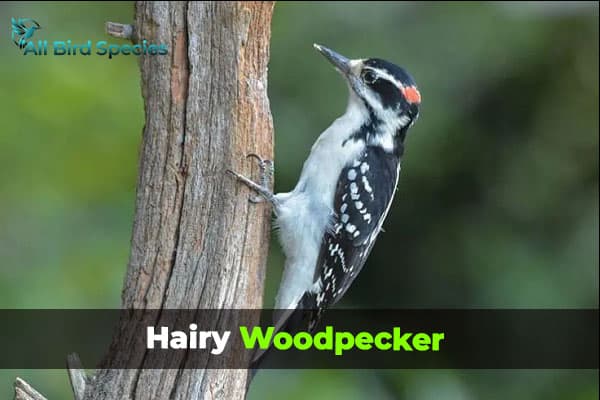
Similarities to the Downy Woodpecker
Both the Hairy and Downy Woodpeckers like to eat insects and seeds. This makes them fun to watch at bird feeders. The Hairy Woodpecker is usually alone while the Downy Woodpecker is often with others. This difference is clear when we see them looking for food.
Habitat and Nesting Preferences
The Hairy Woodpecker lives in both old forests and suburban areas. They like to make their nests in dead or diseased trees. This choice helps them find good places to raise their young and get enough food. Their ability to live in different places shows how well they adapt to changes in their environment.
6. Pileated Woodpecker
- Wingspan: 66 – 75 cm
- Length: 40 – 49 cm
- Mass: 250 – 350 g
- Lifespan: >12 years
The Pileated Woodpeckers is the biggest in Michigan. Seeing this bird excites bird watchers and nature lovers. Its bright look and unique sounds make it stand out.
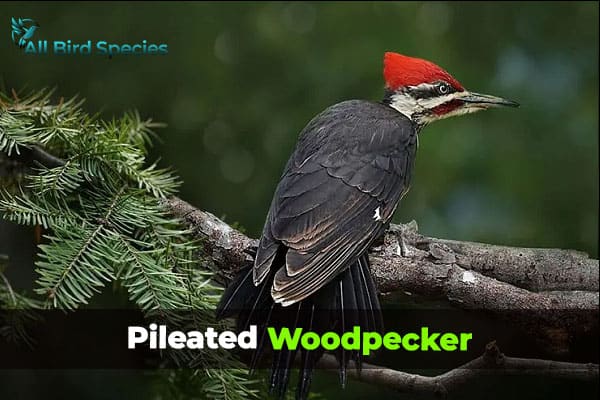
This bird has a bright red crest and a bold black body. Its white stripes on the face make it easy to spot. It’s about 16-19 inches long and has a wingspan of 26 to 30 inches.
It’s not just about looks; the Pileated Woodpecker is important in its home. It makes big nests in dead trees. These nests help other animals by giving them shelter and places to nest.
Common Calls and Behavior
The Pileated Woodpecker’s calls are loud and clear, often heard in the woods. They make sharp, high sounds from far away. These sounds help them talk to each other and find mates.
They look for carpenter ants and other insects in trees. Watching them climb trees or peck at dead wood shows how they live in the woods.
What Makes Woodpeckers Unique?
Woodpeckers are known for their drumming behavior. This behavior helps them mark their territory and find a mate. They have strong, pointed beaks ideal for making nests and finding insects in tree bark. These skills make them important in forest ecosystems.
Where to Find Woodpeckers in Michigan
Finding woodpeckers in Michigan is a thrilling adventure for bird lovers. These birds can be seen in different places, each offering a chance to see them up close. The variety of places where they live makes watching them even more fun.
Best Habitats for Woodpeckers
Woodpeckers live in many places that give them the food and homes they need. In Michigan, you can find them in:
- Pine forests
- Wooded swamps
- Parks
- Gardens
These spots have lots of trees and insects, which are key for woodpeckers. Many species stay around all year, especially in winter when food is scarce.
Top Locations for Bird Watching
If you want to see woodpeckers, Michigan has great places for bird-watching. Some top spots are:
- Grand Traverse Commons
- Lincoln Brick Park
- Old Mission Lighthouse Park
- Sleepy Hollow State Park
These places are perfect for seeing different species and enjoying Michigan’s beauty. Whether you’re an expert or new to bird watching, you’ll find these spots rewarding.
Check Our Previous Articles:
| Herons in Texas |
| Hawks in California |
| Orange and Black Birds in Colorado |
| Sparrows in Ohio |
| Black Birds With Yellow Beaks |
Conclusion
In Michigan, we find a wide variety of woodpeckers. From the Red-headed Woodpecker to the Pileated Woodpecker, each species brings its charm. These birds make our forests and parks more beautiful.
Birdwatching in Michigan helps us connect with nature and protect woodpecker habitats. We must support conservation to keep these birds safe for the future.

